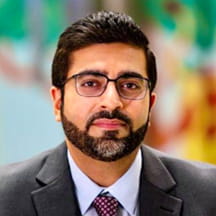Eating disorders among young people are a critical public health concern, requiring urgent attention and investment in specialized services.
As societal pressures, social media influences, and mental health challenges grow in adolescents, health care providers and policymakers must recognize the gravity of the crisis and the necessity of accessible, evidence-based interventions.
Many young people with eating disorders, such as anorexia nervosa, bulimia nervosa, and binge-eating disorder, are also affected by severe mental disorders. Less than 28% of these patients are getting the care they need.
As executive director of the Behavioral Health Institute at Children’s Hospital Los Angeles (CHLA), this unmet need drives me to find solutions, especially since early intervention can significantly reduce the prevalence of these disorders among youth.
Input from internal experts
To increase access and enhance care, we began making improvements to our eating disorder treatment framework in 2023.
As a critical first step, we developed a new inpatient program staffed with dietitians, dedicated psychologists, social workers, hospitalists, physician assistants, and a psychiatrist. The team worked together creating enhancements to support patients, families, and staff, including:
- Grouping inpatients within a dedicated hospital area to optimize specialized care delivery and streamline training for frontline staff.
- Installing in-room video monitoring systems to decrease the demand for in-person monitoring, enhancing privacy and creating a supportive environment for families.
- Launching an outpatient program to meet the demand for accessible treatment in a less intensive environment and provide follow-up care for discharged inpatients.
- Establishing contracts with all major payors, both government and commercial, to accept all insurances.
Transitioning to outpatient care
The synergy between our inpatient and outpatient services has been instrumental. Following nutritional stabilization and educational preparation, our transitioning inpatients are better equipped for sustained success in our outpatient program through which they receive the continuum of care necessary to support long-term recovery.
The program also takes a family-based treatment approach, particularly for anorexia but also for bulimia and avoidant/restrictive food intake disorder. Often, the first goal is to empower families to take control of feeding their child.
While nutrition plays a vital role in treatment, a multidisciplinary approach is essential to delivering effective care. Patients are treated by a team that includes an adolescent medicine physician, a registered dietitian, and a psychologist. When needed, patients also have access to a child and adolescent psychiatrist with care coordination provided by a psychiatric social worker.
Program growth reflects increasing need;
Approximately half of the patients continue to the outpatient program after completing inpatient treatment, setting them up for success after being discharged from the hospital.
CHLA’s program has grown rapidly since it began in January 2023.
| 2022 | 2023 | 2024 | Program growth since inception | |
|---|---|---|---|---|
| Outpatient encounters | 15 | 767 | 1,124 | 7,393% |
| Inpatient encounters | 527 | 667 | 733 | 39% |
Although we plan to expand in the coming years, there is a waitlist for patients seeking eating disorder care.
We also face payor-related barriers. Many insurers still fail to fully recognize the medical necessity and value of multidisciplinary treatment approaches, which limits service from essential specialists. It puts the financial burden on patient families and may harm strategic expansion.
Eliminating the waitlist will require a forward-thinking, multifaceted strategy. AI diagnostic screening tools could improve early intervention. And private health care sector investment could increase treatment facilities.
Our goal is to serve more patients with this high standard of care that’s proven to improve outcomes and access so young people get the patient-centered care they need to thrive.



